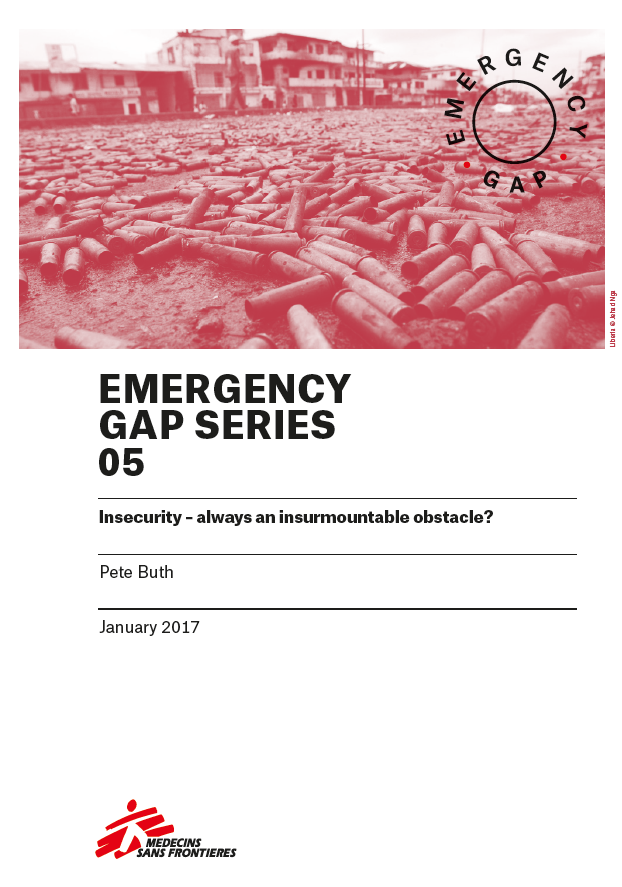Emergency gap: Insecurity – always an insurmountable obstacle?
Emergency gap series 05
This paper, drawing partly on some of the findings of the recently published research study Secure Access in Violent Environments, attempts to offer a reflection on the subject of risk acceptance, and some of the underlying factors that –apart from the actual security threat– influence security decision-making in the humanitarian sector.
Why, despite the significant investments and the professionalisation of the sector, do humanitarians continue to fail to deliver in the hardest-to-reach places? It is too easy to put the blame on the external security environment alone. Instead, humanitarian organisations need to examine how they fare in terms of their institutional willingness and capabilities to accept and manage security risks, which are, after all, an inherent part of humanitarian action.
This paper argues that security management should be inextricably linked to programming and operational decision-making. Removing risk management away from the operational reality in the field will likely increase risk aversion and result in suboptimal humanitarian interventions, thus widening the emergency gap.
Furthermore, key enablers for operating in insecure environments – negotiated access, principled action and independent logistics capacity – are not sufficiently developed and applied in the sector. The investments in the sector have had little impact for those they were meant for. It may be time to review the approach. Perhaps it is worth considering supporting some organisations to develop the capabilities to operate in the toughest contexts, operationally and politically independent from the system.
Another element that is rightfully gaining increasing prominence in the sector, is duty of care. It is also an important enabler of humanitarian action, but it inherently comes into tension with the humanitarian imperative when overwhelming need –a certainty in the most insecure humanitarian crises– forces humanitarians to stretch available resources to the maximum. That duty of care is an employer’s moral and legal obligation is not disputed, but its application in the messy, dilemma-filled reality of humanitarian action is more complex than it appears on the surface.
The humanitarian imperative must remain central to how the system is organised (humanitarian architecture), how organisations organise themselves internally (decision-making on programme criticality), what capacities organisations build (competencies) and what they consider as acceptable risk thresholds.


 MSF_EGS05_Insecurity_always an insurmoutable obstacle_January 2017_0
MSF_EGS05_Insecurity_always an insurmoutable obstacle_January 2017_0